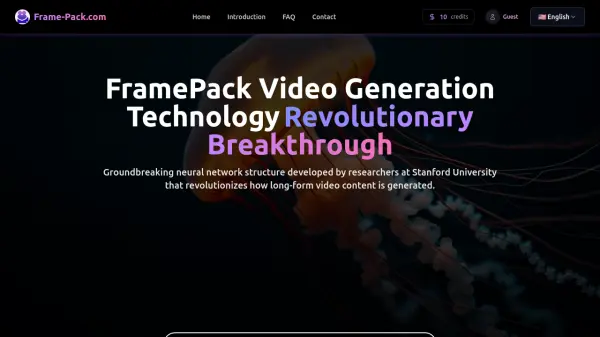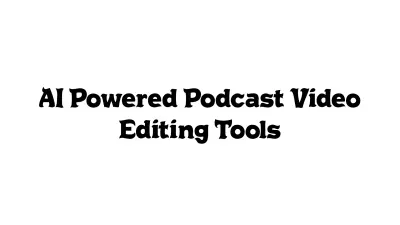What is FramePack AI?
Developed by researchers at Stanford University, FramePack AI introduces a novel neural network structure designed to enhance the capabilities of AI video generation models, particularly for long-form content. It directly confronts the 'forgetting-drifting dilemma' – the challenge where models either lose track of early content details or suffer from accumulating visual errors over time. By implementing progressive frame compression, FramePack AI intelligently reduces the data load of less critical frames, allowing it to maintain a fixed computational context length irrespective of the video's total duration. This breakthrough enables the processing of substantially longer video sequences without escalating computational demands.
The architecture incorporates unique anti-drifting sampling techniques that generate video frames with bi-directional context, significantly mitigating the quality degradation often seen in extended AI-generated videos. FramePack AI is designed for compatibility, allowing integration with existing pretrained video diffusion models through fine-tuning, bypassing the need for complete retraining. This efficiency extends to the training process itself, enabling larger batch sizes comparable to image diffusion models, thus accelerating development and improving the overall quality and temporal consistency of generated video content.
Features
- Fixed Context Length: Maintains constant computational requirements independent of input video length.
- Progressive Compression: Optimizes memory by applying higher compression to less important frames while preserving key visuals.
- Anti-Drifting Sampling: Employs novel sampling strategies (Vanilla, Anti-Drifting, Inverted Anti-Drifting) to prevent error accumulation and quality loss.
- Compatible Architecture: Integrates with existing video diffusion models like HunyuanVideo and Wan through fine-tuning.
- Balanced Diffusion: Supports diffusion schedulers with less extreme flow shifts for enhanced visual quality.
- Higher Batch Sizes: Allows training with batch sizes similar to image diffusion models (e.g., 64 samples/batch), accelerating the training process.
Use Cases
- Generating extended, high-quality videos without significant quality degradation or computational increase.
- Converting static images into dynamic, temporally consistent video sequences.
- Creating videos from textual descriptions with improved narrative consistency and visual stability.
- Expanding existing short video clips into longer, coherent narratives.
- Animating photographs while preserving the subject's identity and introducing natural movement.
FAQs
-
What makes FramePack different from other video generation approaches?
FramePack solves the forgetting-drifting dilemma using progressive frame compression for a fixed context length, addressing both memory limits and error accumulation simultaneously, while maintaining efficiency comparable to image diffusion models. -
Can FramePack be integrated with my existing video generation pipeline?
Yes, it is designed for compatibility and can be integrated with existing pretrained video diffusion models (like HunyuanVideo and Wan) through fine-tuning, avoiding the need for complete retraining. -
What hardware requirements are needed to implement FramePack?
FramePack is efficient; training a 13B parameter model at 480p can use a batch size of 64 on a single 8×A100-80G node. Inference can run on a single A100-80GB or potentially 2x RTX 4090s. -
How does FramePack handle different video resolutions and aspect ratios?
It supports multi-resolution training using aspect ratio bucketing, allowing flexible handling of various resolutions (e.g., 480p tested) and aspect ratios. -
Is FramePack suitable for real-time applications?
While primarily focused on high-quality generation, its computational efficiency and fixed context length show promise for potential real-time applications with further optimization, especially for streaming or interactive scenarios.
Related Queries
Helpful for people in the following professions
FramePack AI Uptime Monitor
Average Uptime
99.71%
Average Response Time
352.1 ms
Featured Tools
Join Our Newsletter
Stay updated with the latest AI tools, news, and offers by subscribing to our weekly newsletter.











